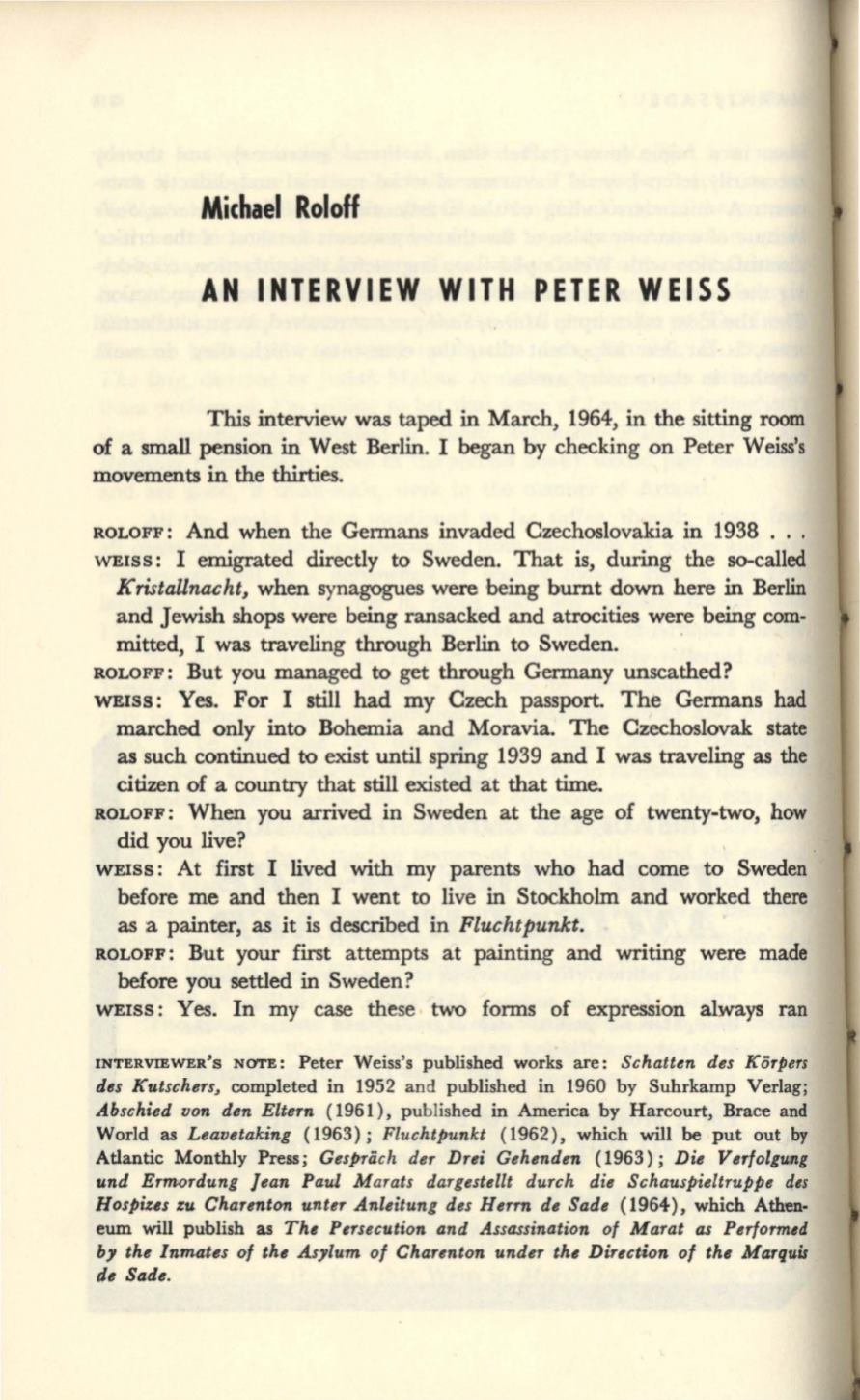
Michael RoioH
AN INTERVIEW WITH PETER WEISS
This interview was taped in March, 1964, in the sitting room
of a
small
pension in West Berlin. I began by checking on Peter Weiss's
movements
in
the thirties.
ROLOFF:
And when the Germans invaded Czechoslovakia in 1938 ...
WEISS:
I emigrated directly to Sweden. That is, during the so-called
Kristallnacht,
when synagogues were being burnt down here in Berlin
and Jewish shops were being ransacked and atrocities were being com–
mitted, I was traveling through Berlin to Sweden.
ROLOFF:
But you managed
to
get through Germany unscathed?
WEISS:
Yes. For I still had my Czech passport. The Germans
had
marched only into Bohemia and Moravia. The Czechoslovak state
as such continued
to
exist until spring 1939 and I was traveling as the
citizen of a country that still existed at that time.
ROLOFF:
When you arrived in Sweden at the age of twenty-two, how
did you live?
WEISS:
At first I lived with my parents who had come to Sweden
before me and then I went to live
in
Stockholm and worked there
as a painter, as it is described in
Fluchtpunkt.
ROLOFF:
But your first attempts at painting and writing were made
before you settled
in
Sweden?
WEISS:
Yes. In my case these
two
forms of expression always ran
INTERVIEWER'S NOTE:
Peter Weiss's published works are:
Schatten des Korpers
des Kutschers,
completed in 1952 and published in 1960 by Suhrkamp Verlag;
Abschied von den Eltern
(1961), published in America by Harcourt, Brace and
World as
Leavetaking
(1963);
Fluchtpunkt
(1962), which will
be
put out
by
Atlantic Monthly Press;
Gespriich der Drei Gehenden
(1963);
Die Verfolgung
und Erroordung Jean Paid Marats dargestellt durch die Schauspieltruppe d,s
Hospizes zu Charenton unter Anleitung des Herrn de Sade
(1964-), which Athen–
eum
will
publish as
The Persecution and Assassination of Marat as Perform,d
b, the Inmates of the Asylum of Charenton under the Direction
0/
the Marquis
de Sade.


